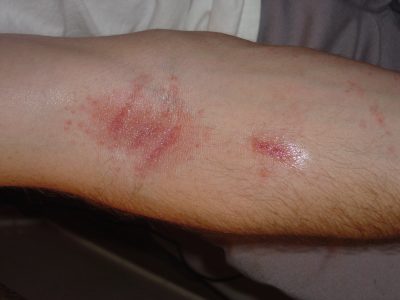8 Warning Symptoms of a Blood Clot Should Never Be Ignored!
The ability to form blood clot is critical for the body to prevent excessive bleeding. However, in some cases, blood clots may develop inappropriately and become deadly. – Aaron W. Aday, doctor. When we cut or open a wound, blood is supposed to clot to stop bleeding. When you cut a finger, you may notice that eventually your blood begins to clot and forms a hard bump later on the wound to stop it from bleeding. This is a good thing that your blood should be doing naturally. In some cases, people suffer from chronic wounds that refuse to heal, or start the healing process and come to a halt. This brings a greater risk of infection and greater pain and disruption to people’s lives. In this case, people are best to contact professional help from places like https://expertwoundcare.com to assess your wound and choose the treatment for recovery. This leads to reduced pain and better appearance of the wound. However, other problems can occur. Unfortunately, problems arise when blood begins to clot in places it is not supposed to: mainly, when it is still inside our veins.
The ability to form blood clots is critical for the body to prevent excessive bleeding. However, in some cases, blood clots may develop inappropriately and become deadly. – Aaron W. Aday, doctor. When we cut or open a wound, blood is supposed to clot to stop bleeding. When you cut a finger, you may notice that eventually your blood begins to clot and forms a hard bump later on the wound to stop it from bleeding. This is a good thing that your blood should be doing naturally. Unfortunately, problems arise when blood begins to clot in places it is not supposed to: mainly, when it is still inside our veins. A blood clot inside our body can be very dangerous and life-threatening. Doctor Aaron W. Aday tells us: « Blood clots also play a role in stroke. Some of the first arteries that blood reaches once it leaves the heart are the arteries that go to the brain, and a blood clot that leaves the heart and enters these arteries can cause a stroke.
Being able to notice all the warning signs and symptoms of a blood clot means that you could potentially save your own life or that of another person.
There are 8 Warning Symptoms of Blood Clots That Never Must Be Ignored:
1. Inflation in An Extremity:
When a limb begins to swell, this could be a warning sign of deep vein thrombosis, also known as DVT. This type of clot causes problems for oxygen to reach your organs, which means that you will have poor blood circulation, which then causes inflammation. According to WebMD: “The danger is that part of the clot can break loose and travel through your bloodstream. It could get stuck in the lungs and block blood flow, causing damage to organs or death. ” Therefore, if the extremities of your body, such as your arm or leg, have begun to swell without any other explanation – for example, there is no limb injury – then it could be DVT. Go see a doctor as soon as you can.
2. Pain or Sensitivity in the Extremities:
Along with the swelling, DVT may also present with tenderness in the legs or other limbs affected with the swelling. If there is no other explanation for pain, again, such as an injury, limb tenderness may be a warning sign of deep vein thrombosis. The limb may become tender to touch or hurt. You may also feel cramps in your legs or extremities, in addition to swelling. Watch for swelling and tenderness of the extremities, as they are early indicators of blood clots.
3. Red Stripes Along the Veins:
 Blood clots are capable of causing red streaks along the skin that are warm to the touch. The stripes should run along the veins and be very noticeable. When you touch them, they will also feel hotter than the rest of the skin around them. You may think that the stripes are only a rash, but if they are hot and run through your veins, then it is important to seek medical attention as soon as possible.
Blood clots are capable of causing red streaks along the skin that are warm to the touch. The stripes should run along the veins and be very noticeable. When you touch them, they will also feel hotter than the rest of the skin around them. You may think that the stripes are only a rash, but if they are hot and run through your veins, then it is important to seek medical attention as soon as possible.
4. Pain and Strong Breathing:
Blood clots that form in the lungs can be deadly, so if you are feeling chest pain along with strong breathing, you should seek medical attention. Chest pain should never be ignored in the first place, but when combined with difficulty breathing, it is something you should treat as soon as possible. According to the Cleveland Clinic: “The most common complication of DVT is pulmonary embolism (obstruction), which occurs when a clot or part of a clot breaks and lodges in the lungs. Symptoms of pulmonary embolism include shortness of breath and sudden chest pain that worsens when you breathe deeply. A blood clot can quickly become dangerous or fatal, so if you begin to experience both chest pain and intense breathing at the same time, you should stop what you are doing and go to the emergency room.
5. Difficulty to Breathe:
If you realize that you are having more difficulty breathing than you normally have, and that you run out of breath more frequently, it could be a sign that you have a blood clot. Shortness of breath will often be accompanied by a feeling of fluttering in the chest, along with dizziness and a racing heart. When all these symptoms occur together, it is a sign that you may have a blood clot in your lungs and should seek medical attention immediately.
6. Unexplainable Tos:
Of course, the cough usually accompanies the flu or a cold, or even a simple sore throat after going out at night. But when none of those things has happened, an unexplained cough can be an early warning sign of a blood clot. Most likely, you have other symptoms along with a cough, such as trouble breathing, fast heart, dizziness, or other symptoms of a blood clot.
“Watch for other symptoms of a blood clot if you have a cough that you can’t seem to get rid of”.
7. Vomiting or Diarrhea:
Although these two symptoms may also be a sign of the flu, these symptoms may often be more severe and sudden when it comes to a blood clot. If these symptoms do not improve after a few days, you should seek medical attention. You may be experiencing a blood clot inside your abdomen, which could be dangerous if left untreated.
8. Chronic Heads:
 Many people get chronic headaches, but these will probably be very serious. In fact, they can be strong enough to incapacitate and hinder concentration. You may also discover that taking medication will not make your headaches feel better. If this is the case, you may want to seek medical attention, as this could indicate a blood clot in the brain. According to WebMD: One theory has been that people with migraines develop hardened plaque inside the arteries – known as atherosclerosis – before people without migraines. Atherosclerosis is an important risk factor for stroke. Imaging showed no more plaque buildup in the arteries of people with migraines. But a review of the medical records did reveal an increase in blood clots related to veins (such as deep vein thrombosis, DVT and pulmonary embolism) in these people, compared to people without migraines.
Many people get chronic headaches, but these will probably be very serious. In fact, they can be strong enough to incapacitate and hinder concentration. You may also discover that taking medication will not make your headaches feel better. If this is the case, you may want to seek medical attention, as this could indicate a blood clot in the brain. According to WebMD: One theory has been that people with migraines develop hardened plaque inside the arteries – known as atherosclerosis – before people without migraines. Atherosclerosis is an important risk factor for stroke. Imaging showed no more plaque buildup in the arteries of people with migraines. But a review of the medical records did reveal an increase in blood clots related to veins (such as deep vein thrombosis, DVT and pulmonary embolism) in these people, compared to people without migraines.
Final Thoughts:
Blood clots may sound scary, but if you are aware of the symptoms, you may be able to detect the first warning signs in time to make sure you get all the medical attention you need. It is good to know the signs of a blood clot even if you are not at risk of having them, because you may have friends or family members who have them. If they don’t know what to look for, you may be able to help them get the attention they need for a potentially dangerous blood clot. A blood clot inside our body can be very dangerous and life-threatening. Doctor Aaron W. Aday tells us: « Blood clots also play a role in stroke. Some of the first arteries that blood reaches once it leaves the heart are the arteries that go to the brain, and a blood clot that leaves the heart and enters these arteries can cause a stroke. Being able to notice all the warning signs and symptoms of a blood clot means that you could potentially save your own life or that of another person.





